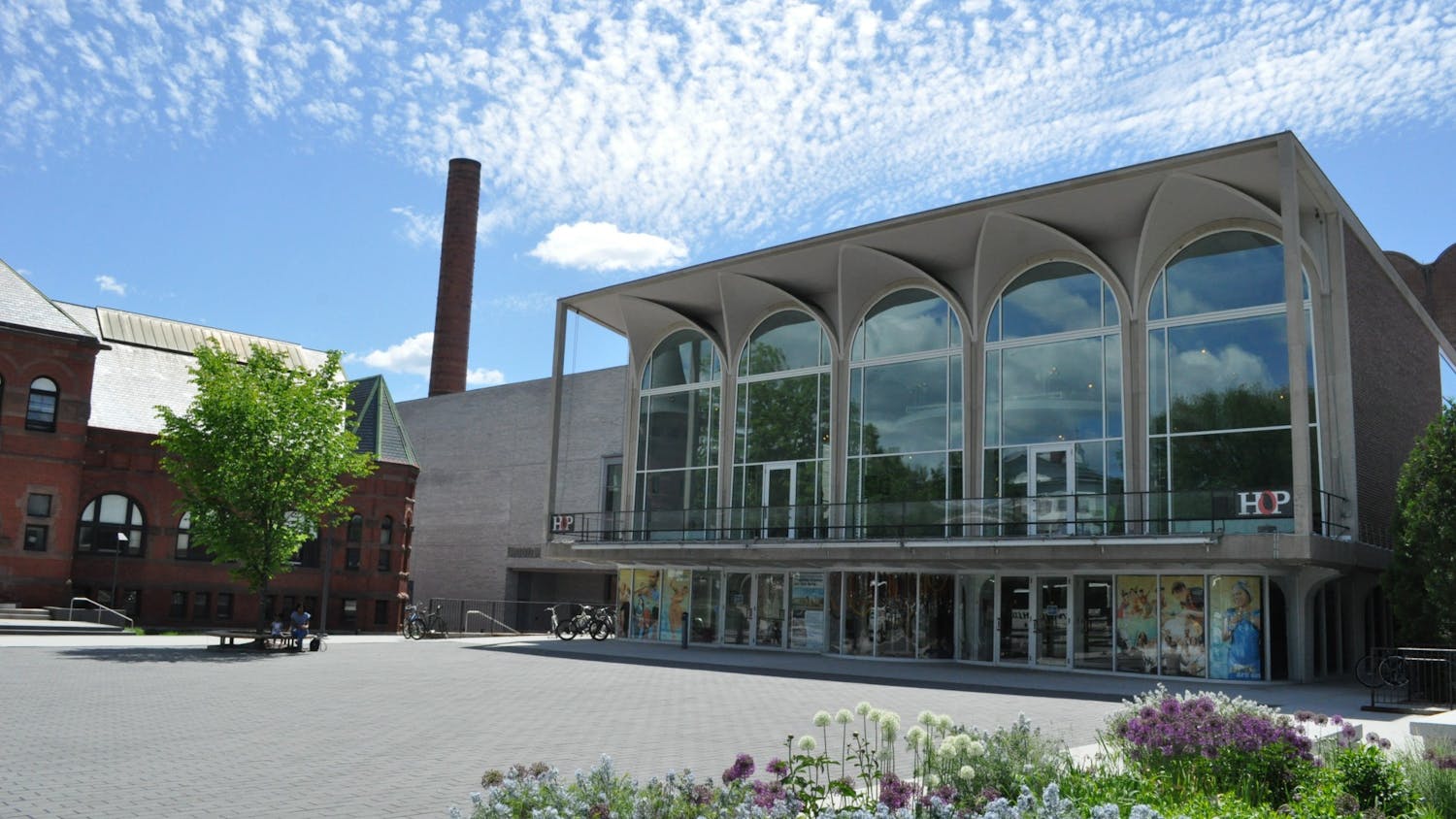Using irony as ammunition, Haozous' art takes potshots at themes of modern greed, self-worship, environmental ruin and cultural assimilation. For Haozous' Rotunda piece a dome-shaped structure covered with paper students will be at liberty to post anything they would like on the structure, be it a photo, poem or drawing.
"I'm offering a tool for communication," Haozous said. "I know this campus has a lot of underlying issues why not talk about them openly? We're trying to crack open a door that's really sealed tight."
Dartmouth will host Haozous as an artist-in-residence for the coming week. He last visited Dartmouth as an artist-in-residence in 1989.
One of today's most prominent Native American artists, Haozous said he takes issue with most Native American art, which he described as a series of vapid decorations that feed into stereotypes.
Standing in bold opposition to this norm, Haozous creates monumental works with a visual vocabulary so simple that even an uninformed viewer can intuit the pieces' political statements.
Haozous' installation hardly represents the first attempt at collaborative artwork efforts towards communal artistic conception can be traced to the construction of the first Mosque of Djenne in 13th century Africa. Haozous' work is, however, unique in its integration of Native American ideology.
"My tribe, the Apache people, lived in the most barren place you can imagine, but they were happy, healthy and very intelligent," Haouzous said. "How did they do it? They had to be able to push everything aside religion, politics, economics and solve problems directly and interactively. Art is about asking everyone to look at themselves not as a reflection of their history, family or race, but instead to look at themselves as a part of who they are today."
Haozous' border-breaking intentions also extend to America's obsession with cultural hierarchy.
"I don't really think that art should be restricted to galleries or to the pedestal," Haozous said. "I think that the verticality of America and its socio-cultural hierarchy is very negative. In the Native tradition, culture exists on a holistic horizontal, where all forms of expression are equal."
Inspired by traditional Native American lodges, Haozous' dome in the Barrows Rotunda conjures the familiarity that a home is meant to provide.
"What we're trying to do is create a space where students have the opportunity to say something with art that isn't allowed with the high art of New York or Paris," Haozous said.
In a manner reminiscent of Basquiat and his graffiti-scrawling ilk, Haozous hopes that his installation will transcend the dichotomy of highbrow/lowbrow and foster an appreciation for the work as a medium for social commentary.
"Right now we have the idea of the artist's hand with the golden touch," Haozous noted. "This'll be open to the janitor."
Haozous said he hopes his installation will broaden Dartmouth students' perspectives.
"Art is about creativity, which pushes the isms' aside," Haozous said. "I know this school has a tendency to funnel people towards a certain life, and that's not necessarily a bad thing that's what schools do but it should also be opening doors for people in other directions."
Haozous' statement might seem to represent yet another thinly veiled criticism of Dartmouth's corporate recruiting culture, but Haozous concedes both in his art and in his speech that Wall Street is as valid a route as any to the new American dream.
For Haozous, this installation is more of a communal exercise than a means towards personal glorification.
"This has nothing to do with individual glorification that's a Western concept," Haozous said. "We're not going to ask students to sign their additions, though they're welcome to if that's part of their statement."
Ultimately, the installation reflects the life of a society in miniature.
"The reason my tribe was so predominant is that we were holistically equal," Haozous said. "Everyone shared. Everyone could contribute however he saw fit. With the arrival of Western verticality, this culture of collaboration came to an end. And we all know what happened to my tribe then."
Haozous' work sets itself apart through the participative effort it uses to convey a sense of collaborative meaning.
"Put your feelings on this," Haozous said. "You can own it."
Haozous' piece in the Barrows Rotunda is part of "Native American Art at Dartmouth," a series of exhibitions that runs until March 11, 2012.




